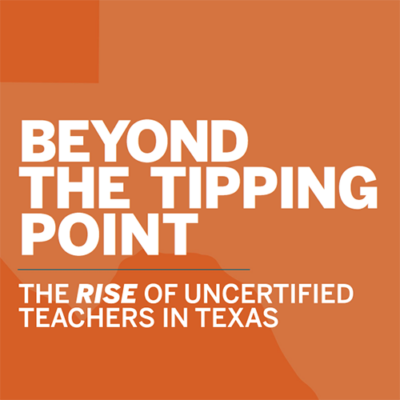Addressing the Teacher Shortage
The preparation, placement and retention of PreK-12 teachers is essential to ensuring the success of the public education system. We know that educator preparation matters when it comes to teacher retention and effectiveness and, most importantly, when it comes to student learning and outcomes. Simply put, students do better when they have university-certified teachers.
The College of Education remains committed to addressing and taking action on the teacher shortage in Texas through comprehensive research, ongoing collaboration with state and district leaders and maximizing resources and programs including Texas Education THRIVE and LonestaRP3. As long as the statewide teacher shortage exists, COE will continue to meet the challenges head-on. The future of education in Texas is, and always will be, our priority.

In Texas, the PreK-12 system loses about 10% of its teachers in any given year. In the wake of COVID-19, teacher attrition rates significantly increased, causing a significant spike in alternative pathways to move educators into the classroom. In 2022, in partnership with Educate Texas and other Texas education leaders, the College of Education examined this alarming trend and investigated how different educator pathways impact teacher retention and student success.

As the College of Education and its partners continue to create meaningful reporting around teacher attrition, educational leaders across Texas commissioned a follow-up study, Beyond the Tipping Point: The Rise of Uncertified Teachers, to examine how emerging alternative educator pathways have led to a notable rise of uncertified teachers. With half of newly hired teachers in Texas now lacking certification and classroom experience, the study explores how traditional university-based teacher preparation programs and alternative certification programs can result in vastly different student outcomes.





